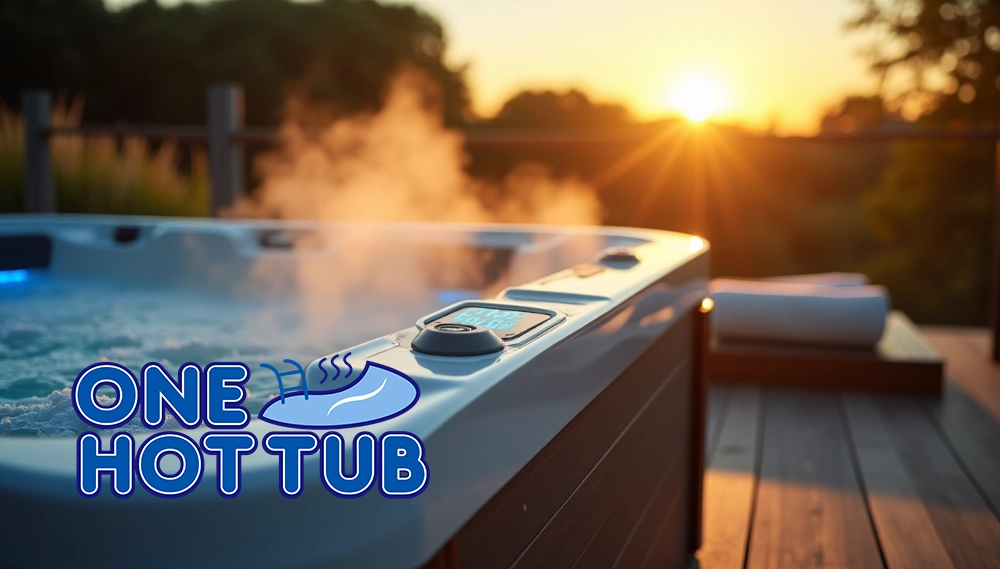Table of Contents - Can You Go In A Hot Tub While on Antibiotics? Expert Advice for Recovery
- Can You Go in a Hot Tub While on Antibiotics?
- Hot Tub Sickness Symptoms to Watch For
- Do’s and Don’ts: Hot Tub Use During Antibiotic Treatment
- Alternatives to Hot Tubs While on Antibiotics
- Recommendations for Hot Tub Safety Products
- Can You Go in a Hot Tub While on Antibiotics? Expert Advice for Recovery
- Final Thoughts – Can You Go in a Hot Tub While on Antibiotics?
- FAQs
This blog post may contain affiliate links. As an Amazon Associate I earn from qualifying purchases.
Hot Tub Safety While on Antibiotics: Risks, Tips & Alternatives
- Higher risk of getting dehydrated (not what your healing body needs!)
- Making you extra sensitive to heat (hello, dizzy spells)
- Exposing you to unwelcome bacteria like Pseudomonas and Legionella (uninvited guests at your spa party)
Can You Go in a Hot Tub While on Antibiotics?
can you go in a hot tub while on antibiotics?
Understanding the risks
Pseudomonas aeruginosahot tub folliculitisLegionella
Why heat and antibiotics may not mix
- Ciprofloxacin (Cipro) stays stable below 100°C but hates the sustained heat in hot tubs
- Tetracycline antibiotics like doxycycline make you super sun-sensitive
- Fluoroquinolones leave your skin extra vulnerable to… well, everything
P. aeruginosa
Do’s and Don’ts While on Antibiotics
| Do | Don’t |
|---|---|
| Consult your healthcare provider before hot tub use | Use hot tubs with open wounds or skin infections |
| Check chlorine levels (should be at least 3 ppm) | Stay in hot tubs longer than 10 minutes if you must use one |
| Shower before and after hot tub use | Submerge any part of your body with a bandage |
| Consider alternatives like gentle stretching for relaxation | Assume chlorination eliminates all risks |
Hot Tub Sickness Symptoms to Watch For
Common signs of infection
Hot tub folliculitis comes with these telltale signs:
- Itchy red bumps clustering around hair follicles
- Bumps that might ooze pus (usually yellowish or green)
- Rash that loves hiding under swimsuit areas
- Painful, dark red tender nodules
- Coughing and trouble breathing
- Achy muscles and headaches
- Fever that won’t quit
- Diarrhea (sometimes greasy with a smell you won’t forget)
- Belly pain and gas
- Feeling nauseated or throwing up
When to seek medical help
Call your doctor right away if you notice:
- Fever climbing above 101°F (38°C)
- Symptoms sticking around longer than 2 days
- More than six dash-to-the-bathroom episodes daily
- Blood or pus making an appearance in your stools
- Severe stomach pain that has you doubled over
- Signs you’re getting dehydrated
Do’s
- Monitor your temperature if symptoms appear
- Snap photos of rashes to track changes
- Drink plenty of fluids with tummy symptoms
- Seek medical attention for high fever or breathing issues
Don’ts
- Ignore symptoms that hang around past 5 days
- Scratch those itchy rashes (it spreads infection!)
- Assume all hot tub symptoms will go away on their own
- Put off treatment when symptoms are getting worse quickly
Do’s and Don’ts: Hot Tub Use During Antibiotic Treatment
The Hot Tub Rulebook: Smart Moves vs. Bad Ideas
| Smart Moves | Bad Ideas |
|---|---|
| Talk to your doctor first (always!) | Soaking with open wounds or skin infections |
| Keep it brief—10 minutes max | Turning your soak into a marathon session |
| Shower before AND after your dip | Sharing towels (ick!) |
| Check those chlorine levels (aim for 3-5 ppm) | Using cloudy, poorly maintained hot tubs |
| Keep water temp below 100°F | Cranking the heat above 104°F |
| Drink plenty of water | Mixing alcohol with your hot tub time |
| Wash your swimsuit right away | Reusing unwashed swimwear |
| Keep your head above water | Dunking your head underwater |
| Test water quality with test strips | Ignoring signs of bacterial growth |
Your 10-Step Safety Guide (If You Must Soak)
- Chat with your doc – First things first—get professional advice about your specific medication.
- Read the fine print – Check your medication guide for any warnings about heat or sun sensitivity.
- Test before you dip – Use those test strips to confirm proper chlorine (3-5 ppm) and pH (7.2-7.8).
- Dial down the heat – Keep water temperature below 100°F instead of cranking it to 104°F.
- Scrub-a-dub-dub – Take a thorough shower before you even think about getting in.
- Watch the clock – Set a timer for 5-10 minutes max—no cheating!
- Hydrate, hydrate, hydrate – Drink water before, during, and after your soak.
- Know when to bail – Feel dizzy? Sweating too much? Get out immediately!
- Rinse off round two – Shower again afterward to wash away chemicals and bacteria.
- Laundry time – Wash that swimsuit with detergent right away.
Alternatives to Hot Tubs While on Antibiotics
Can you take a bath while on antibiotics?
Do’s
- Keep water warm (not steaming hot)
- Limit splash time to 15-20 minutes
- Make sure your tub sparkles before use
- Pat your skin completely dry afterward
Don’ts
- Soak in super hot water that makes you sweat
- Add fancy bath products if taking skin antibiotics
- Take magnesium baths within 2 hours of your meds
- Share towels with your housemates
Sauna and antibiotics: Is it safer?
- Some antibiotics (especially tetracyclines and fluoroquinolones) make your skin super sensitive, which might make infrared saunas a no-go
- Sauna sessions during antibiotic treatment can have serious—even deadly—consequences in some cases
- All that heat might weaken how well your antibiotics work
Relaxation methods without heat exposure
- Box breathing: This simple breathing pattern calms your nervous system in seconds—perfect for stress management before, during, or after tense moments
- Progressive Muscle Relaxation: Targets those anxious muscle knots by tensing and releasing each muscle group
- Guided imagery: Close your eyes and transport yourself to a peaceful beach (or wherever makes you happy)
Recommendations for Hot Tub Safety Products
Best water test kits for hot tubs
| Test Kit Type | What’s Cool About It |
|---|---|
| Digital Readers | No more squinting at colors—these gadgets give you exact numbers! |
| Test Strips | Budget-friendly and super quick (results in seconds) |
| Liquid Test Kits | The science teacher’s choice—uses titration for spot-on readings |
- pH: Keep between 7.2-7.8 (your skin will thank you!)
- Sanitizer: 3-5 ppm for chlorine, 4-8 ppm for bromine
- Alkalinity: 80-120 ppm (helps everything else stay balanced)
Top-rated hot tub sanitizers on Amazon
| Sanitizer Type | Magic Numbers | Why Folks Love It |
|---|---|---|
| Chlorine | 3-5 ppm | Won’t break the bank and zaps nearly everything |
| Bromine | 4-8 ppm | Gentler on sensitive skin and works in hot water better |
| Biguanide | 30-50 ppm | No chemical smell and gives water that silky-smooth feel |
POOLPURE Hot Tub Mineral Stick
Can You Go in a Hot Tub While on Antibiotics? Expert Advice for Recovery
- Higher risk of getting dehydrated (not what your healing body needs!)
- Making you extra sensitive to heat (hello, dizzy spells)
- Exposing you to unwelcome bacteria like Pseudomonas and Legionella (uninvited guests at your spa party)
Final Thoughts – Can You Go in a Hot Tub While on Antibiotics?
FAQs
Q1. Is it safe to use a hot tub while taking antibiotics?Q2. What are the risks of using a hot tub during antibiotic treatment?Q3. Are there any alternatives for relaxation while on antibiotics?Q4. How long should I wait after finishing antibiotics before using a hot tub?Q5. What precautions should I take if I must use a hot tub while on antibiotics?



